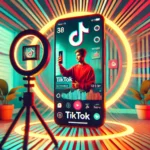Introduction to Literotica Tags
Literotica tags are essential for categorizing and organizing adult fiction, making it easier for readers to discover content that aligns with their preferences. These tags function as keywords that describe the genre, theme, or specific elements within a story. By using the right tags, authors can reach their target audience more effectively while ensuring that readers find content suited to their tastes.
History and Evolution of Literotica Tags
The concept of tagging has evolved significantly in digital literature. Initially, online stories were sorted manually into broad categories. However, as online erotic fiction grew in popularity, the need for a more detailed classification system arose. Literotica tags emerged as a solution, allowing authors to precisely describe their stories while giving readers a seamless browsing experience.
Types of Literotica Tags
1. Genre Tags
These tags define the primary category of a story. Examples include:
- Romance
- BDSM
- Sci-Fi/Fantasy
- Historical Fiction
2. Theme-Based Tags
Themes highlight specific elements of the story, such as:
- First-time experiences
- Public encounters
- Forbidden romance
- Supernatural elements
3. Content Warning Tags
Content warnings help readers avoid themes they may find uncomfortable. Examples:
- Non-consensual scenarios
- Heavy BDSM elements
- Psychological manipulation
4. Audience-Specific Tags
Some tags cater to specific demographics, ensuring that stories reach the right audience:
- LGBTQ+
- Interracial
- Mature content
Benefits of Using Literotica Tags
- Enhanced Discoverability: Well-tagged stories rank higher in search results, making them easier to find.
- Better Reader Engagement: Proper tagging helps attract the right audience, increasing reader retention.
- Improved Story Organization: Authors can categorize their works effectively, making browsing smoother for users.
- Niche Community Building: Specific tags allow niche communities to thrive by curating content tailored to their interests.
Best Practices for Authors
Using literotica tags effectively requires strategy. Here’s how authors can optimize their tagging process:
- Be Specific: Instead of using broad tags, opt for detailed ones. For instance, “BDSM romance” is better than just “romance.”
- Limit the Number of Tags: Overloading tags can dilute a story’s focus. Stick to 5-10 relevant tags.
- Avoid Misleading Tags: Tagging a story with elements it doesn’t contain can frustrate readers and lead to negative feedback.
- Update Tags When Necessary: Reader feedback can guide adjustments to ensure better accuracy.
Reader’s Guide to Literotica Tags
Readers can maximize their experience by understanding and utilizing tags effectively. Here’s how:
- Use Filters: Most platforms allow users to filter stories based on tags, helping them find exactly what they’re looking for.
- Check Content Warnings: Tags can act as trigger warnings, helping readers avoid uncomfortable topics.
- Explore Related Tags: Clicking on tags often leads to similar stories, expanding reading options.
Popular Literotica Tags and Their Meanings
| Tag | Meaning |
|---|---|
| BDSM | Bondage, discipline, dominance, and submission |
| Voyeur | Stories involving watching others |
| MILF | Mature woman as the main character |
| Public | Sexual encounters in public settings |
| Paranormal | Supernatural elements like ghosts or vampires |
The Role of Tags in SEO
Literotica tags play a crucial role in search engine optimization (SEO). Proper tagging improves content visibility, helping stories rank higher in search results. Integrating these tags with relevant keywords and meta descriptions enhances their discoverability, ensuring that they reach the intended audience.
Ethical Considerations in Tagging
Tagging should always be done ethically. Authors should respect readers by avoiding misleading tags and ensuring that sensitive themes are properly labeled. Accuracy in tagging helps create a positive and trustworthy platform for both readers and writers.
Challenges and Controversies
While literotica tags improve discoverability, they also come with challenges. Some common issues include:
- Tag Spamming: Overusing tags to attract more readers can reduce content credibility.
- Inconsistent Tagging: Lack of standardization can make searching difficult.
- Reader and Author Disputes: Disagreements may arise over the accuracy of certain tags.
Future Trends in Literotica Tagging
The evolution of AI and machine learning is expected to revolutionize the way tags are assigned. Automated tagging systems and personalized recommendations will further refine content categorization, making it even more accessible to readers.
Conclusion
Literotica tags are a vital component of digital erotic fiction, enhancing discoverability, improving reader engagement, and supporting ethical content organization. By understanding and using these tags effectively, both authors and readers can maximize their experience on various platforms.
FAQs
- Can I create my own literotica tags?
- While some platforms allow user-generated tags, most follow a predefined tagging system to maintain consistency.
- Do tags affect how many readers find my story?
- Yes, well-chosen tags improve search rankings and make stories more visible to interested readers.
- How many tags should I use per story?
- A balanced number is between 5-10 relevant tags to ensure clarity without overwhelming readers.
- What should I do if my story fits multiple categories?
- Use the most relevant tags that best describe the primary themes of your story.
- Are certain tags more popular than others?
- Yes, popular tags like “romance,” “BDSM,” and “first time” tend to attract more readers.
RECOMMENDED ARTICLES
The Ultimate Guide to 5StarsStocks.com Value Stocks
RemixPapa: The Ultimate Guide to Digital Remixing & Music Production
Newznav.com 8888996650 – Everything You Need to Know
Steven Maranga Nyambega: A Comprehensive Guide to His Life and Achievements














